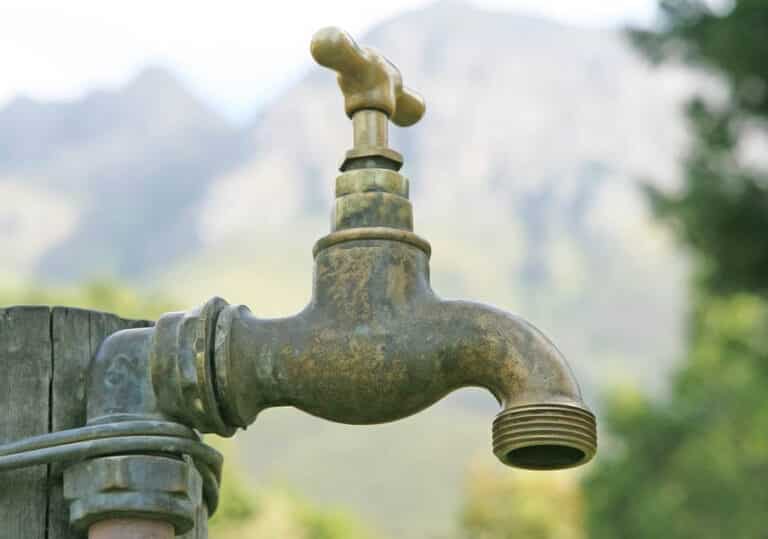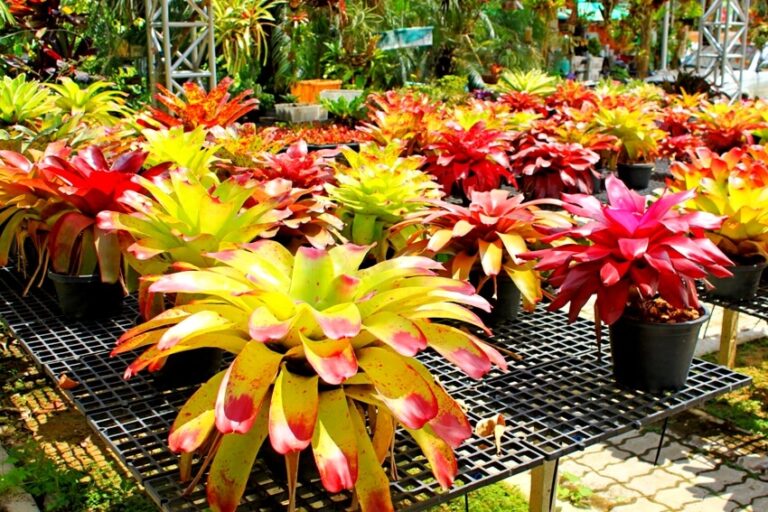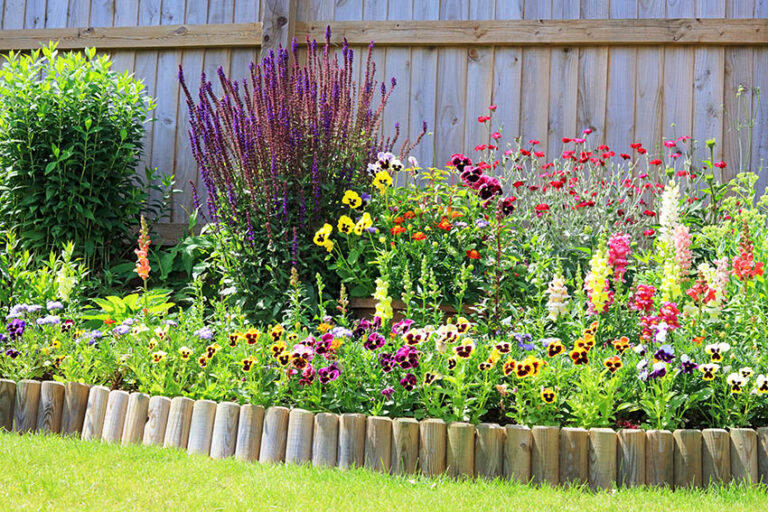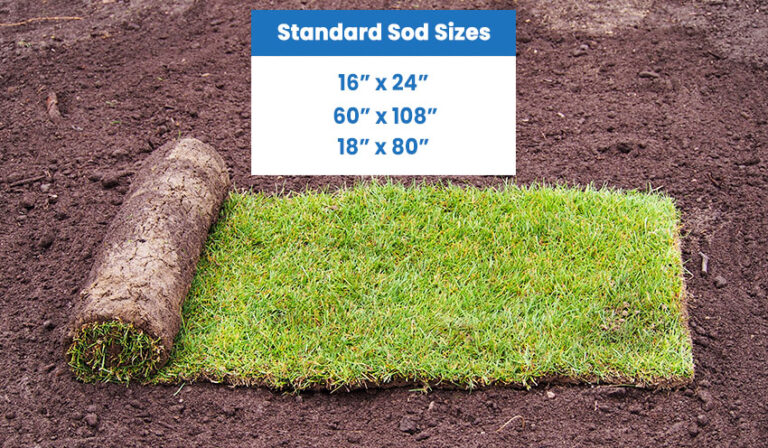Types Of Sod Grass (Varieties of Grass & Sod Care Tips)
Here’s the different types of sod grass including the popular varieties, ideal size, cost, how to lay & water it, and the best grass sod care tips to consider.
 Building a home, from the bathroom to your lawn, requires informed decisions you’ve made from several choices presented to you. And when it comes to home lawns, the variety of sod and turf grass to choose from.
Building a home, from the bathroom to your lawn, requires informed decisions you’ve made from several choices presented to you. And when it comes to home lawns, the variety of sod and turf grass to choose from.
And this choice for grass and a new lawn needs to be more meticulous considering you are choosing for a living product that’s costly and mismanaging and lack of maintenance can destroy it. [toc]
What Is Sod Grass?
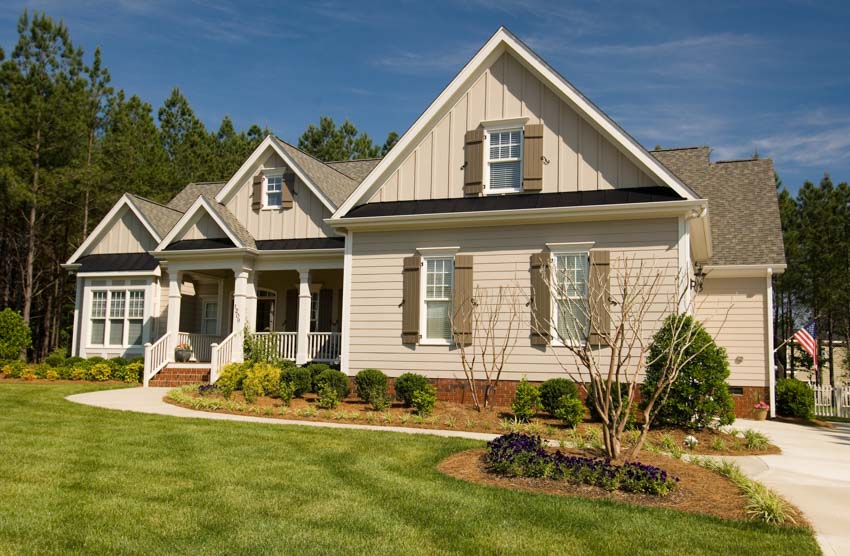 Sod is a combination of grass and a small part of the soil, with its root system being all held together either by the soil itself or a thin biodegradable later. It is an instant and ready-to-install lawn where you can simply roll it out on the ground and water it, and voila!
Sod is a combination of grass and a small part of the soil, with its root system being all held together either by the soil itself or a thin biodegradable later. It is an instant and ready-to-install lawn where you can simply roll it out on the ground and water it, and voila!
You have a newly installed lawn. Yes, it is that easy to have a brand new lawn and you get to skip all the tedious processes that come with the natural process of sowing seed and waiting for the grass to grow and come through.
Sod is the ideal material for landscaping and is often used in sports stadiums, golf courses, and maintained lawns in schools, commercial areas, and private homes.
Benefits of Sod
Choosing sod grass showcases the following advantages you can benefit from:
• Preventing erosion (Especially on the hillsides and new construction sites)
• Preventing flooding (Drains and diverts the water to the ground where it becomes part of the water supply in the ground)
• Improves water and air quality in the area
• Improves cooling
• Can be used as a roofing material
There are different types of sod grasses to choose from and the maintenance you need to work on would vary based on these types. One of the key points in choosing sod is to learn about the cool season and the warm season of grass varieties.
This is necessary since the climate in your location should match the sod you choose. The grass can only flourish and live well if this matches.
The southern part of the United States is the home to warm-season types of sod grass, growing actively during the year’s warmest months (April to October).
The northern part on the other hand is where cool-season types of sod flourish. This is the reason why it is important to consider the climate where you’re in when choosing a type of sod grass.
Other factors that are worth considering when choosing a sod are the following:
• Homeowner’s vision of your lawn
• Tolerance toward challenging conditions
• Pros and cons of the types of sod grass
• Risk for wear and tear
• Lawn maintenance
And there are more factors you will encounter as you explore the different types of sod you can install in your home.
Bermuda Grass

This means that the sod is durable enough against human foot traffic, as well as dog traffic and even urine. It is even resilient against weeds and other environmental stressors and can grow six inches to six feet deep into the soil. It also won’t get easily damaged and if there are some damages, recovery is easy. This is not surprising since it has 7 to 10 USDA hardiness zones.
With a medium green blade color that matures with the size of 15 to 24 inches, Bermuda grass sod needs full sunlight and a well-drained ground with low water and soil pH of 6.5 to 8. This is precisely the reason why it only grows well in the United States’ southern areas and will not flourish in places with colder temperatures.
Another major drawback is that despite its vigor supported by rhizomes and stolons as it grows, Bermuda grass needs frequent mowing due to its fast rate and aggressive growth. Maintenance can be quite challenging just to maintain the sod on the lawn and within the area you want it to stay in.
Bluegrass

It often dies out too when the summer comes and the drought sets it. If you choose Bluegrass, you might end up having a lackluster and empty lawn after the climate changes to a hotter temperature.
With a lime green color that’s lighter than Kentucky bluegrass, this will need a closer look, especially at the ligule (the long appendage found on the leaf’s base), for better identification. While it’s long for bluegrass, it’s basically non-existent or short in Kentucky bluegrass.
Zoysia
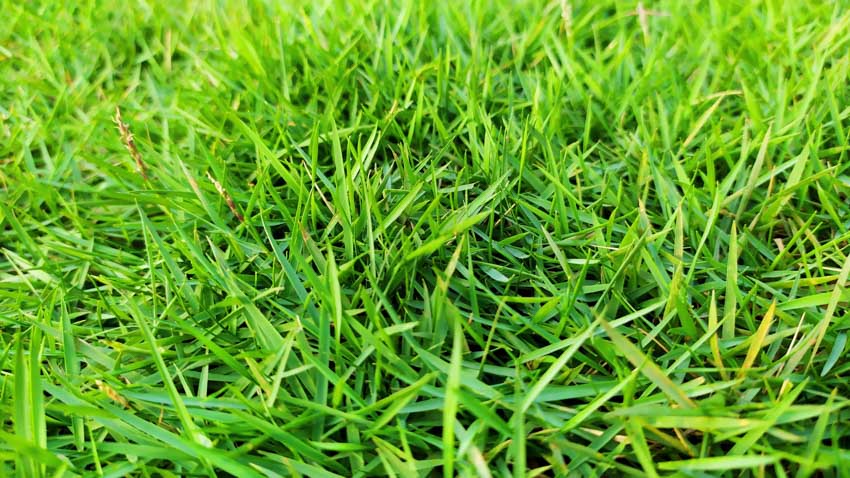
This sod can grow healthily in places with humid and tropical climates, which is mostly found in the southern part of the United States. With a medium green color, Zoysia needs full sunlight to survive. Still, it is also popular for its robust and durability features since it can easily withstand heavy traffic, drought, and intense heat, with its 5 to 10 USDA hardiness zones.
Zoysia also has excellent shade tolerance and injury recovery and can mature to 9 inches tall. But for this to be accomplished, it needs a well-drained ground with 6 to 6.5 pH in the soil. But it has incredible root systems that grow laterally, taking out the need to frequently mow and even helps you cut your water bills.
Spread by rhizomes and stolons, Zoysia grass is a soft, thick, and dense carpet that is able to choke out weeds but may spread so freely that it can reach other areas where it’s not supposed to grow.
Another downside of choosing this sod is the need to continuously correct it just to have a healthy lawn since it has the tendency to produce heavy thatch but the good thing about it is that its maintenance is usually subtler and less demanding than other types of sod.
Fescue

| Aspects | Tall Fescue | Fine Fescue |
| Blade Color | Dark Green | Dark Green |
| Mature Size | 4 to 12 inches | 8 to 12 Inches |
| USDA Hardiness Zones | 3 to 8 | 4 to 7 |
| Sunlight Requirement | Full to Partial | Partial Shade |
| Soil Requirement | Well-drained (Acidic to Neutral pH | Well-drained (Neutral soil pH) |
| Water Requirement | Low | Average |
Tall fescue is considered a cool-season grass that flourished in the northern parts of the US, the same as fine fescue. It has an incredible tolerance against heat and drought but can still flourish even when in shaded areas.
All these traits it shares with fine fescue, especially its excellent tolerance to shade. One big difference is that while tall fescue holds up well with both human and dog foot traffic, fine fescue does not.
Tall fescue, though, has the tendency to bunch up and clump, which is why re-seeding a specific area is an annual task you will partake in if you choose this grass. In general, though, both tall and fine fescue have low maintenance and do not require fertilization that much compared to other types of sod.
Compared to tall fescue, fine fescue is also salt-tolerant, making it an excellent option for seacoast areas. It also features narrow leaf blades that offer a superior appearance because of their fine texture. Tall fescue has wider blades with shiny topsides and coarser texture, which is how it is tolerant to foot traffic in the first place.
Ryegrass
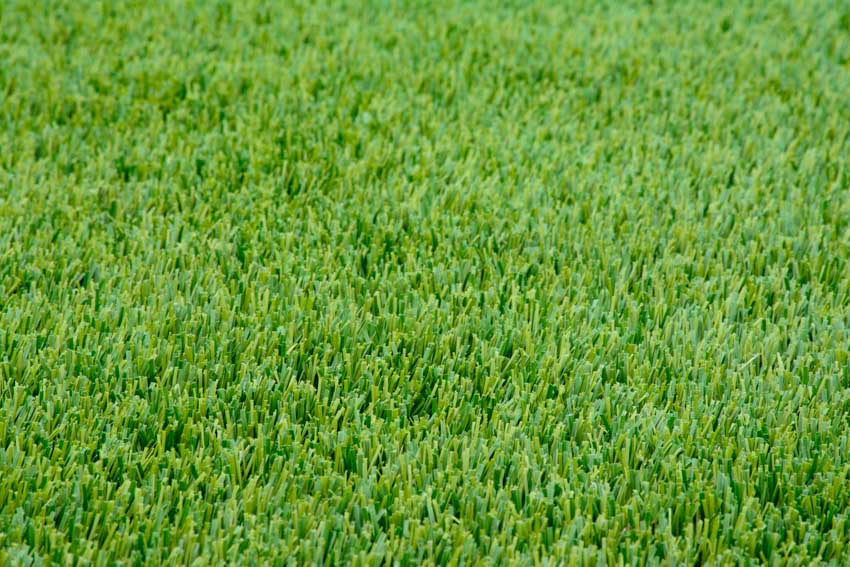
With 3 to 7 USDA hardiness zones, Ryegrass is known for its vulnerability to human and dog foot traffic, as well as dog urine. It is also prone to forming clumps, which is why it features a patchy-looking lawn compared to other types of grass cover that offers a smoother one.
This also means that it is a bit demanding with its maintenance. It requires full sunlight, a well-drained ground (Rich, moist, and slightly acidic to neutral pH of the soil, more water, and more fertilizer compared to other types of grass.)
If you have dogs in your household, choosing ryegrass won’t be a good idea. In this regard, it would be best to go for artificial turf for dogs because they can last against pets better.
St. Augustine
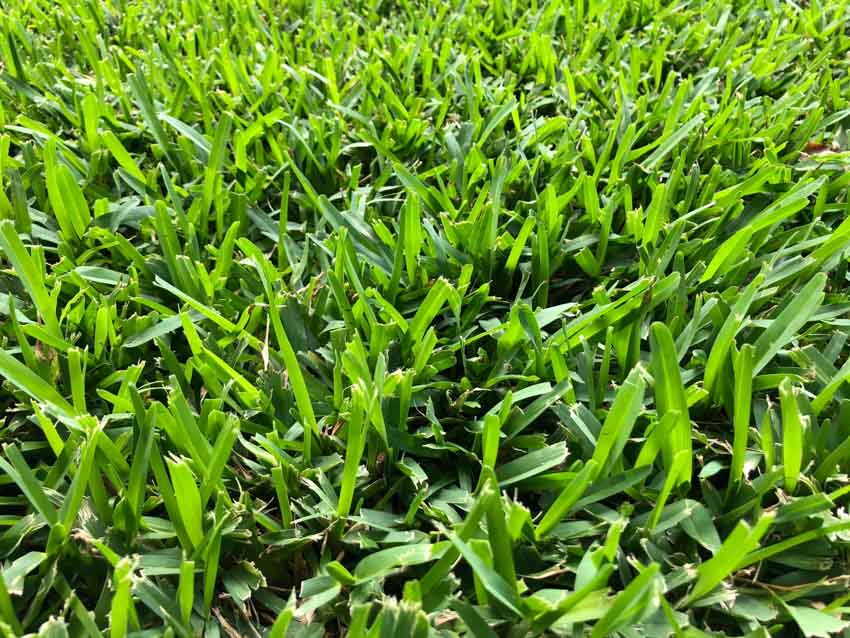
With a bluish-green blade color, St. Augustine is thicker than either Bermuda or Zoysia, adding to its appeal. Its blade is wide and flat and has a very coarse texture.
St. Augustine spreads by stolons and builds lush and dense mats because it creeps, providing the necessary mass to withstand heavy foot traffic. This is also why it has 7 to 12 USDA hardiness zones and can grow up to 6 to 12 inches tall in its maturity.
In order to flourish well and be robust, this grass requires well-drained ground (with 6 to 7.5 pH in soil). It can grow both under sunlight or partial shade, making it a good option for homeowners living in tropical and humid areas. And since it is salt-tolerant and also grows well in the salty regions, homeowners along the ocean and across the coast love using this.
When it comes to maintenance, St. Augustine barely demands it since you don’t have to frequently mow it. Of course, though, you still need to take care of it, which comes in the form of fertilization and moderately low yet adequate irrigation.
Centipede

It is popular with homeowners because of its low maintenance, and this is because it does not require meticulous irrigation or fertilization.
This warm-season grass cover spreads by stolons, creating a thick carpet that helps to keep weeds down, with USDA hardiness zones of 7 to 10. It also has an incredible injury and stress recovery, as well as excellent tolerance to shade It can only grow as tall as 5 inches though when it matures and these shallow roots will need extra watering on some days.
Centipede turf has light green leaf blades, which grow well under full sunlight and well-drained and sandy ground with a soil pH of 5 to 6. It is important to note though that it is sensitive to iron deficiency and so may require you to use iron supplements every now and then.
Kentucky Bluegrass

It spreads via rhizomes, creating a thick and lush mat (USDA hardiness zones of 2 to 6) that looks fantastic with its emerald blue-green color. Since it runs horizontally with the rhizomes, it is able to heal itself when it is damaged.
The density of the carpet also allows excellent wear and tear tolerance and high disease tolerance. The downside though is its vulnerability to drought, heat, and other stressors.
Kentucky bluegrass grows excellently under the full sunlight to light shade and can grow up to 18 to 24 inches once it matures. But it needs well-drained fertile ground with 6 to 7 soil pH. While it only needs average water, fertilization is a high requirement to get that elegant lush lawn.
The maintenance of Kentucky bluegrass is a bit meticulous but the resulting lush and stunning blue-green lawn is all worth the effort. It is considered a high maintenance variety of grass that will require your time and effort to properly care for it, especially with the mowing and use of fertilizers.
How to Get the Right Turf Dimensions
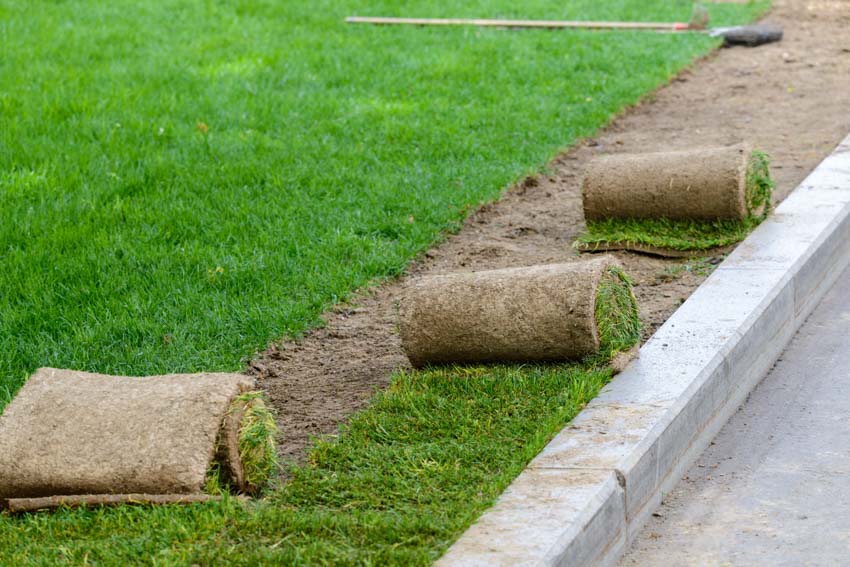
One of the best ways to be sure that you’re getting the right size of grass cover is to measure your lot first and then consult the farm/distributor on their professional opinion about the size to go to. You can also have them cut the grass turf based on your preference.
Sod Cost
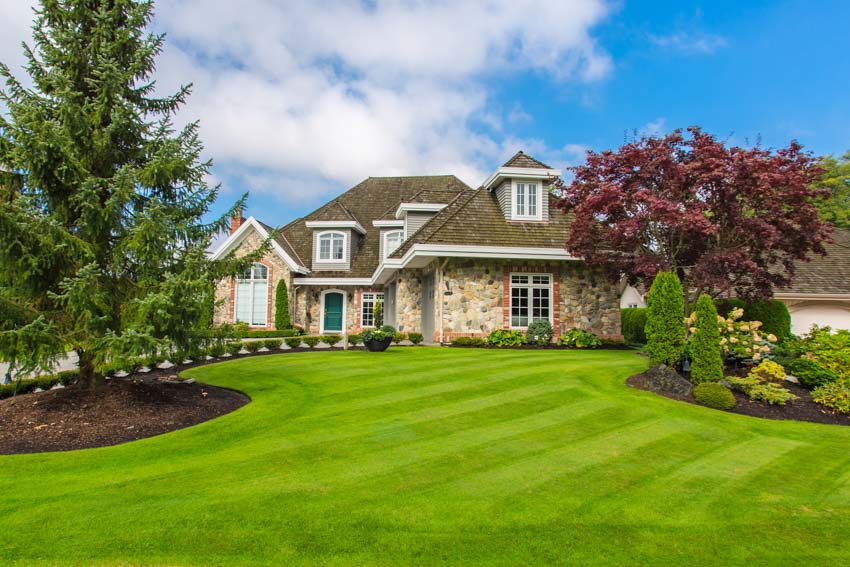
Some of the factors that will affect the turf grass total cost include the following:
• Type of Turf Grass: Some types of turf are more expensive than others and the manufacturers play an important role in pricing them.
• Yard Size: A larger yard requires more grass carpet and so you will be forced to pay more. An average yard measures 8,712 square feet and so can cost approximately between $6,623 to $13,681 for the turf and labor.
• Yard Shape: A perfect rectangle or square is easier to install but a uniquely shaped yard will take more creativity on the part of the professionals, which will cost you more.
• Soil/Ground Prep Work: Additional labor costs will be needed for ground prep work (Weed removal, soil testing, soil tilling and grading, topsoil installation, and fertilization), which depends on the pros you decide to hire.
• Delivery Fees: Delivering turf can be an additional cost if some suppliers ask for it, which can amount on average to $23 to $233.
• Sprinkler System: Convenience-wise, a sprinkler system will help you water your lawn with ease but it will set you back around $2,080 to $3,520 per quarter-acre yard.
• Synthetic Turf: For practical reasons, using types of artificial grass will help you save on landscape and water maintenance but will cost you an average of $12.33 per square foot.
If you somehow choose to DIY the installation of your grass cover, here are the materials you will need and how much they will cost you.
1. Sod: $0.30 to $0.83 per square foot
2. Home soil test: $14
3. Tape measure: $10
4. Fertilizer: $5 to $10/1,000 square feet
5. Garden knife: $27
6. Shovel: $24
7. Wheelbarrow: $90
• Rentals:
1. Lawn roller: $14/4 hours, $21/24 hours
2. Rototiller: $53/4 hours, $76/24 hours
3. Turf cutter: $64/4 hours, $91/24 hours
• Tamper: $50
• Fertilizer spreader: $81
You may also want to use a landscape design software to plan your lawn layout for best results. Some of these programs can help estimate the amount of materials you will need and compute labor & material costs.
How Much Does It Cost to Have Turf Grass Installed
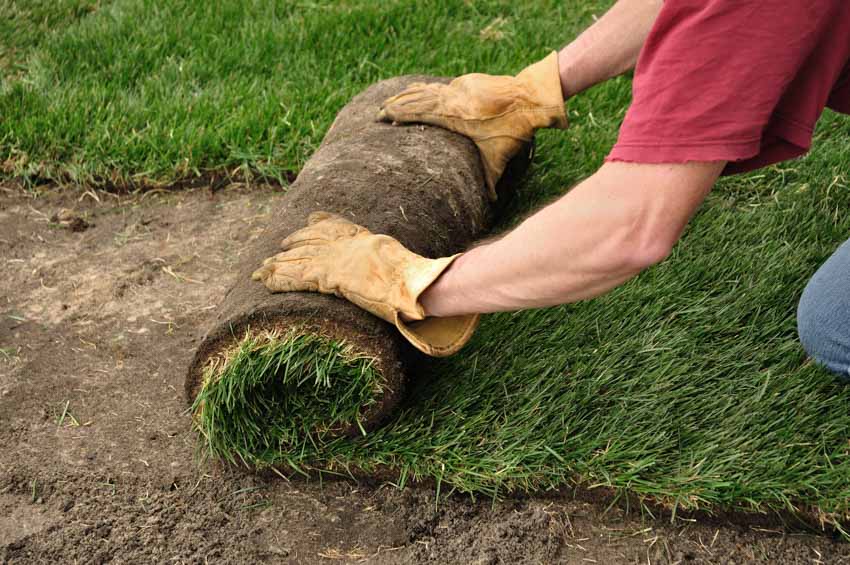
Can You Lay Sod Over Existing Grass?
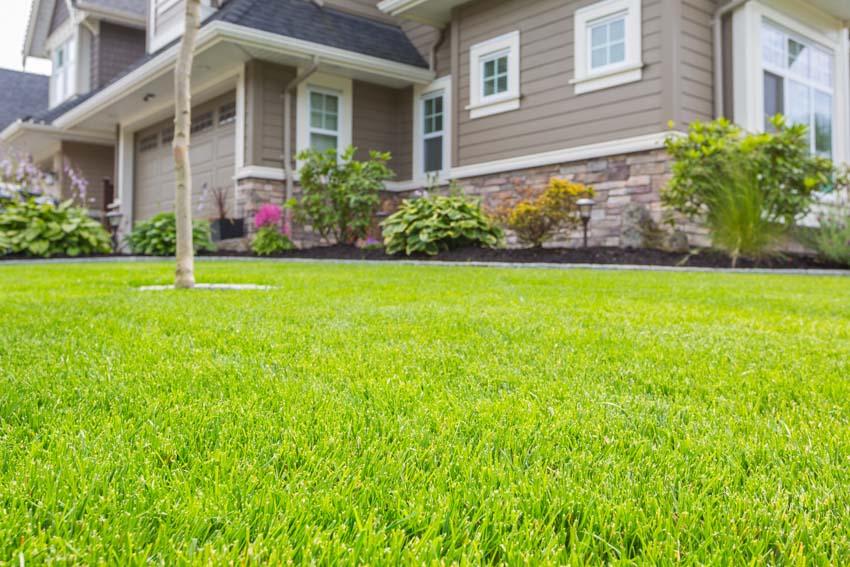
If you still choose to lay your grass cover without uprooting the existing grass, here are the things that you can expect:
• Old weeds will resurface and can possibly damage the new grass cover.
• Since there’s existing grass, it will be difficult for the turf to take root and flourish.
• The new turf won’t look good since it will possibly result in choppy and uneven aesthetics.
How Often to Water Turf

• Week 1: a quarter-inch of water twice daily (Recommended schedule: Early in the morning and then again between 4 to 10 PM)
• Week 2: a half-inch of water once daily (Recommended schedule: Early in the morning)
• Week 3 and onwards: approximately 1.5 inches of water per week (a half-inch of water thrice a week all early in the morning)
Can You Overwater Sod?

Turf Grass Care Tips

1. Apply 1-inch of water within 30 minutes of the turf’s installation
2. Ensure you cover all areas of the lawn when you water it to guarantee equal growth (Avoid hand watering as much as possible since it will be difficult to ensure uniformity)
3. Create a watering schedule every early in the morning (Recommended: 6 to 8 AM)
4. Watering deep into the roots infrequently is better than daily shallow watering
5. You can start mowing approximately a week after installation (Do not use a riding mower since it can damage your new turf with its weight and powered wheels)
6. Regularly mow the turf grass after approximately 3 weeks
7. Cut back on your watering schedule days before your scheduled mowing (Keep the lawn moist though)
8. Fertilize the turf grass 3 to 4 times during the growing season.
See more related content in our article about artificial grass patio on this page.


